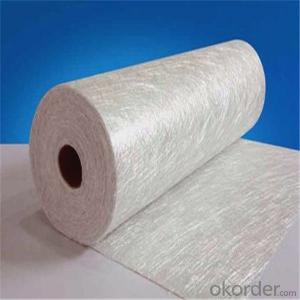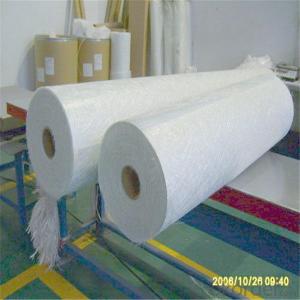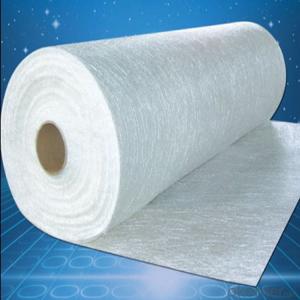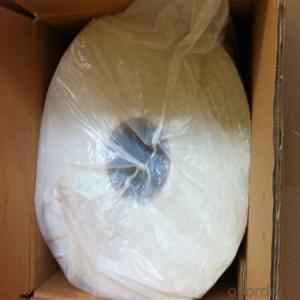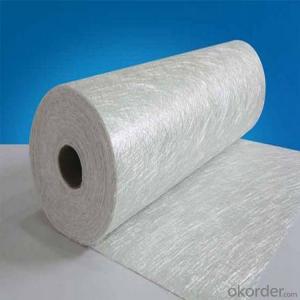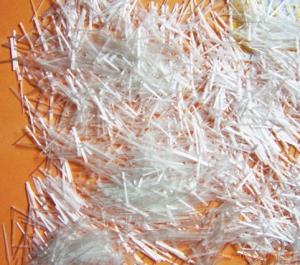China E-glassFiberglass Chopped Stand Mat
- Loading Port:
- Tianjin
- Payment Terms:
- TT OR LC
- Min Order Qty:
- 100 m.t.
- Supply Capability:
- 20000 m.t./month
OKorder Service Pledge
Quality Product, Order Online Tracking, Timely Delivery
OKorder Financial Service
Credit Rating, Credit Services, Credit Purchasing
You Might Also Like
Quick Details
| Technique: | Chopped Strand Fiberglass Mat (CSM) | Dimensions: | 450gsm | Mat Type: | Continuous Filament Mat |
| Fiberglass Type: | E-Glass | Softness: | softness | Place of Origin: | Jiangxi, China (Mainland) |
| Brand Name: | cnbm | Model Number: | 450gsm | color: | white |
| fiberglass type: | E glass | product: | e-glass powder chopped stand mats | binder: | powder or emulsion |
| width: | 1040 or 1270mm, as your requirement | weight: | 30 or 45kg/roll | paper tube diameter: | 90mm |
| outer diameter of roll: | 256mm | packing: | plastic film+carton box + pallet |
Packaging & Delivery
| Packaging Details: | plastic film+carton box + pallet |
| Delivery Detail: | 15-20days |
Specifications
1.e-glass powder chopped stand mats
2.binder:power or emulsion
3.width:1040mm or 1270mm
4.weight:450gsm
Picture
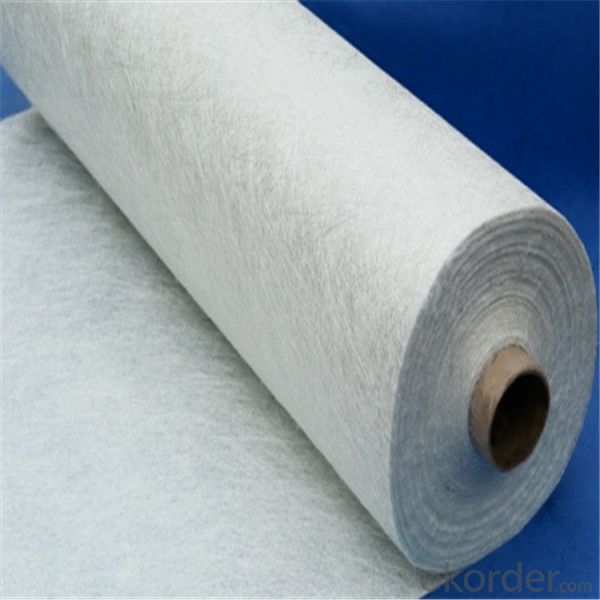
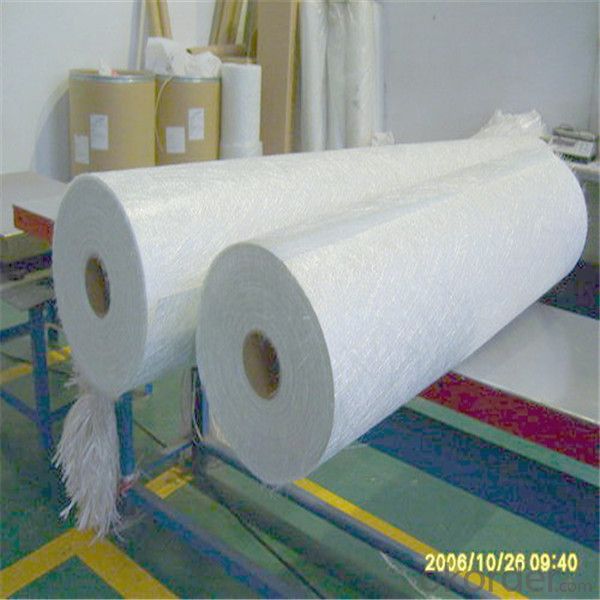
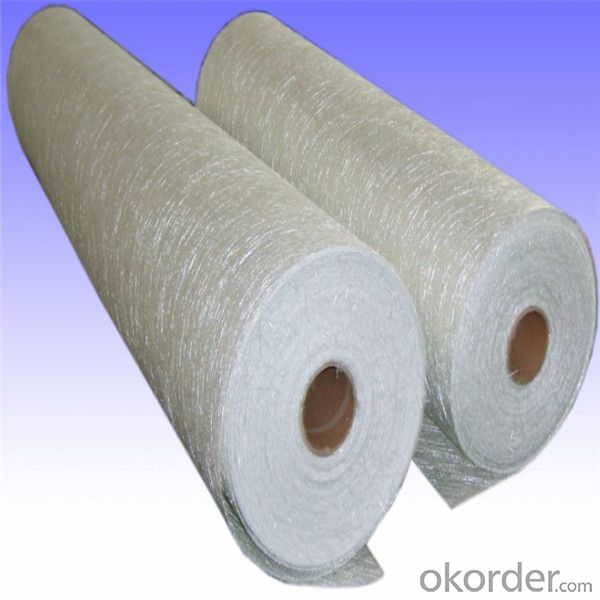
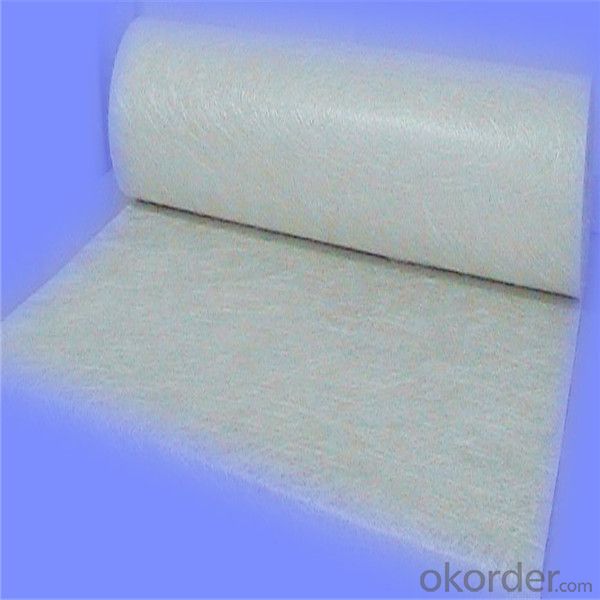
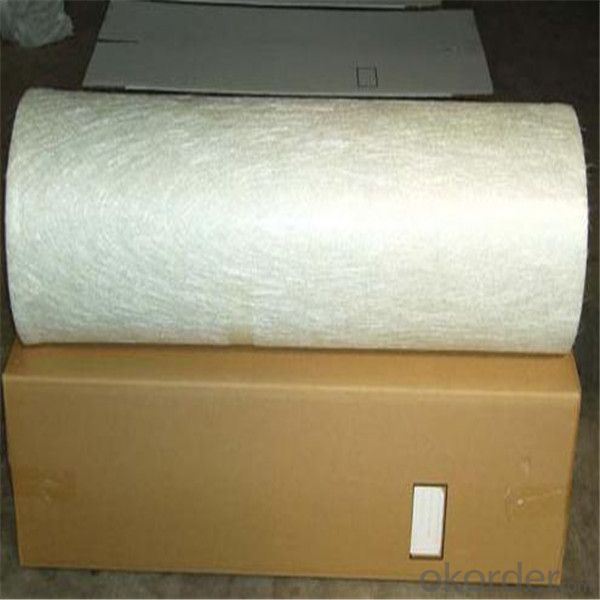
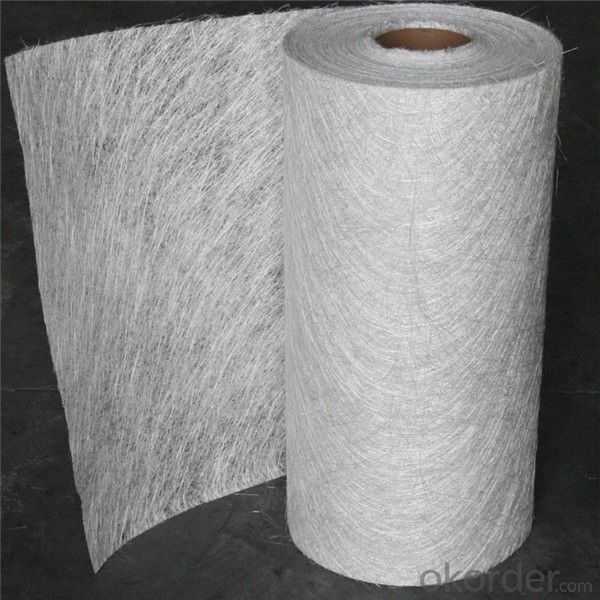
- Q:Can fiberglass chopped strand be used for electrical insulation?
- No, fiberglass chopped strand is not typically used for electrical insulation as it does not possess the necessary dielectric properties required for effective insulation.
- Q:What are the typical processing temperatures for fiberglass chopped strand composites?
- The processing temperatures for fiberglass chopped strand composites may vary depending on the specific resin system utilized. Typically, these composites are processed within a temperature range of 150°C to 200°C (302°F to 392°F). These temperatures are crucial for achieving satisfactory resin flow and curing, guaranteeing the desired mechanical properties and structural integrity of the final composite product. To ensure optimal processing temperatures, it is essential to carefully adhere to the manufacturer's guidelines and recommendations concerning the specific resin and reinforcement materials being utilized.
- Q:What are the typical impact resistance properties of chopped strand composites?
- Chopped strand composites typically exhibit excellent impact resistance properties. The combination of the reinforcing fibers and the matrix material in these composites allows them to absorb and distribute impact energy effectively, reducing the risk of damage or failure upon impact. The long, continuous fibers in the composite provide strength and stiffness, while the matrix material helps to hold the fibers together and transfer the load evenly. This synergy between the fibers and the matrix results in enhanced impact resistance compared to other materials. The specific impact resistance properties of chopped strand composites can vary depending on factors such as the type and length of the reinforcing fibers, the matrix material used, and the manufacturing process. However, in general, these composites have a high resistance to impact and can withstand significant loads without breaking or fracturing. Chopped strand composites are commonly used in various industries, including automotive, aerospace, construction, and sports equipment, where impact resistance is a critical requirement. They are often selected for applications that involve high levels of stress, such as crash structures in automobiles, protective helmets, or structural components in buildings, due to their ability to withstand impact and protect against damage. In conclusion, chopped strand composites possess typical impact resistance properties that make them highly suitable for applications requiring strength and durability. Their ability to absorb and distribute impact energy efficiently makes them a reliable choice for a wide range of industries.
- Q:Can fiberglass chopped strand be used in the production of insulation panels?
- Yes, fiberglass chopped strand can be used in the production of insulation panels. Fiberglass chopped strand is commonly used as a reinforcement material in various composite applications, including insulation panels. It provides strength, durability, and thermal insulation properties to the panels. The chopped strands are mixed with a binder material and then formed into panels using various manufacturing techniques such as compression molding or pultrusion. The resulting insulation panels offer excellent thermal insulation properties, low thermal conductivity, and high resistance to heat transfer, making them suitable for a wide range of applications in the construction and industrial sectors.
- Q:Is fiberglass chopped strand compatible with different curing methods?
- Yes, fiberglass chopped strand is compatible with different curing methods. It can be cured using various methods such as heat curing, chemical curing, and ultraviolet (UV) light curing, depending on the specific application and requirements.
- Q:Can fiberglass chopped strand be used in aerospace composites?
- Yes, fiberglass chopped strand can be used in aerospace composites. It is commonly used as a reinforcement material in composite structures due to its high strength-to-weight ratio, excellent electrical insulation properties, and resistance to corrosion.
- Q:What are the disadvantages of using fiberglass chopped strand?
- There are several disadvantages of using fiberglass chopped strand. Firstly, fiberglass chopped strand has a lower tensile strength compared to other reinforcement materials such as carbon fiber. This means that it may not be as effective in providing structural support in certain applications. Secondly, fiberglass chopped strand is prone to fraying and splitting. This can make it difficult to handle and work with, as it may require additional steps such as sealing the ends to prevent further damage. Additionally, fiberglass chopped strand is not as resistant to heat as some other materials. It can start to degrade and lose its properties at high temperatures, limiting its use in applications where heat resistance is crucial. Furthermore, fiberglass chopped strand has poor resistance to chemicals and solvents. It can easily be damaged or weakened when exposed to certain substances, which can limit its usability in various industries. Lastly, fiberglass chopped strand is not biodegradable and can be difficult to recycle. This can pose environmental concerns, especially when used in large quantities or disposed of improperly. Overall, while fiberglass chopped strand has its advantages such as being lightweight and cost-effective, it is important to consider these disadvantages before choosing it as a reinforcement material.
- Q:How does the fiber alignment affect the properties of fiberglass chopped strand?
- The fiber alignment in fiberglass chopped strand plays a significant role in determining its properties. The alignment influences the strength, stiffness, and overall mechanical performance of the material. When the fibers are aligned parallel to each other, it enhances the material's tensile strength and stiffness, making it more resistant to deformation and capable of withstanding higher loads. On the other hand, if the fibers are randomly oriented, the material may exhibit isotropic properties, with similar strength in all directions. This random alignment can also enhance the material's impact resistance and reduce the risk of delamination. Therefore, proper fiber alignment is crucial in achieving the desired properties and performance of fiberglass chopped strand.
- Q:Can fiberglass chopped strand be used in the production of construction reinforcements?
- Indeed, the utilization of fiberglass chopped strand is possible in the manufacturing of construction reinforcements. This versatile material finds frequent application in the construction sector to fortify an array of building materials including concrete, plaster, and other composites. Its integration with these materials serves to amplify their robustness, longevity, and resilience against cracks and fractures. Typically, during the production process, the chopped strands are blended with the mixture, guaranteeing even dispersion of the reinforcement within the material. Consequently, fiberglass chopped strand emerges as an optimal selection for construction reinforcements due to its ability to offer structural support and enhance the overall efficacy of the building material.
- Q:Can fiberglass chopped strand be used in water treatment tanks?
- Yes, fiberglass chopped strand can be used in water treatment tanks. Fiberglass is resistant to corrosion and can withstand exposure to chemicals commonly found in water treatment processes. Additionally, it is lightweight, durable, and can be easily molded into various tank shapes and sizes.
1. Manufacturer Overview |
|
|---|---|
| Location | |
| Year Established | |
| Annual Output Value | |
| Main Markets | |
| Company Certifications | |
2. Manufacturer Certificates |
|
|---|---|
| a) Certification Name | |
| Range | |
| Reference | |
| Validity Period | |
3. Manufacturer Capability |
|
|---|---|
| a)Trade Capacity | |
| Nearest Port | |
| Export Percentage | |
| No.of Employees in Trade Department | |
| Language Spoken: | |
| b)Factory Information | |
| Factory Size: | |
| No. of Production Lines | |
| Contract Manufacturing | |
| Product Price Range | |
Send your message to us
China E-glassFiberglass Chopped Stand Mat
- Loading Port:
- Tianjin
- Payment Terms:
- TT OR LC
- Min Order Qty:
- 100 m.t.
- Supply Capability:
- 20000 m.t./month
OKorder Service Pledge
Quality Product, Order Online Tracking, Timely Delivery
OKorder Financial Service
Credit Rating, Credit Services, Credit Purchasing
Similar products
New products
Hot products
Related keywords


